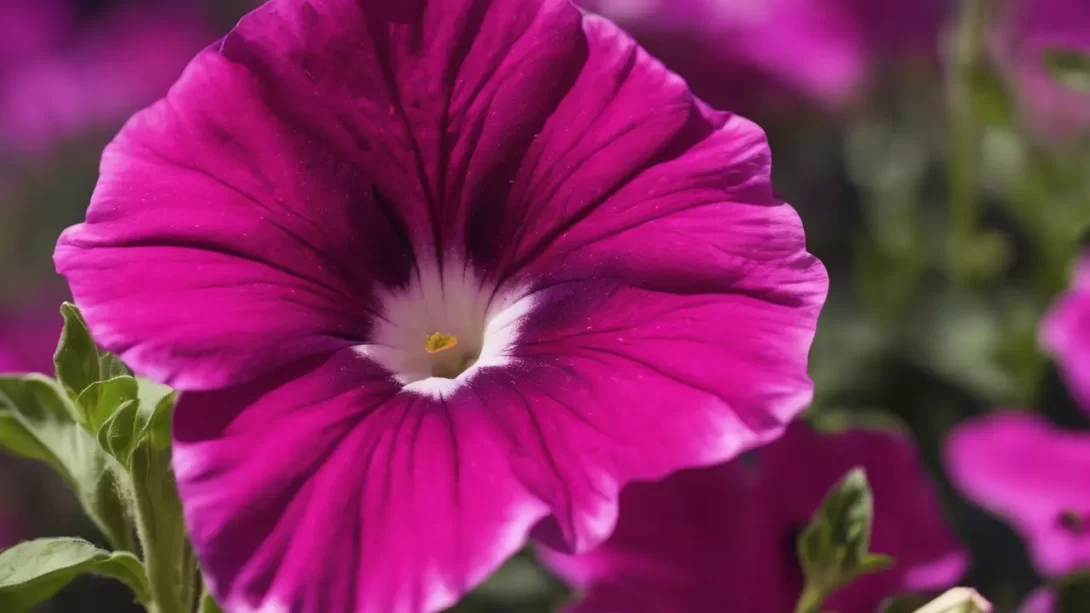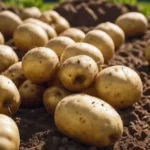Petunias are a staple in many gardens, beloved for their vibrant colors and delightful blooms. However, even these resilient flowers can succumb to various issues, leading to their untimely demise. Understanding the common problems that can impact petunias is crucial for any gardener looking to maintain a healthy and flourishing garden. This article delves into the typical reasons behind the wilting or dying of petunias, providing practical advice for nurturing them back to health.
Improper Watering Practices
Overwatering
One of the most common mistakes gardeners make is overwatering their petunias. These plants prefer a balance, where the soil is moist but not waterlogged. Signs of overwatering include yellowing leaves, a mushy stem base, and a general lack of vigor. Overly wet conditions can lead to root rot, a serious condition that can be fatal if not addressed promptly. To avoid this, ensure good drainage in your garden beds or containers and adjust your watering schedule according to the weather conditions and soil moisture levels.
Underwatering
Conversely, underwatering petunias can also lead to problems. Petunias need consistent moisture, especially during hot and dry periods. Symptoms of underwatering include wilting, dry and crispy leaves, and a reduction in flowering. It’s important to water your petunias deeply, allowing the moisture to reach the root zone. In hot weather, this may mean watering daily. Mulching around the plants can help retain soil moisture and reduce the need for frequent watering.
Nutrient Deficiencies and Soil Issues
The health of petunias is greatly influenced by the soil they grow in. Nutrient-rich, well-draining soil is ideal for these plants. If your petunias are showing signs of poor growth or discolored leaves, it could be due to a deficiency in essential nutrients like nitrogen, phosphorus, or potassium. Conducting a soil test can help identify any lacking nutrients. Amendments like compost or a balanced fertilizer can replenish the soil and provide your petunias with the necessary sustenance for robust growth.
Regularly checking and improving soil quality not only addresses current plant health issues but also sets a strong foundation for future planting seasons. Remember, healthy soil equals healthy plants.
Pests and Diseases
Petunias, like many garden plants, are susceptible to a range of pests and diseases that can compromise their health and vitality.
Common Pests
Aphids, spider mites, and whiteflies are among the most common pests that plague petunias. These tiny insects feed on the sap of the plants, causing the leaves to yellow, deform, or drop prematurely. Natural predators like ladybugs can help control these pests, or you can use insecticidal soaps as a safe and effective treatment.
Fungal Diseases
Fungal diseases such as gray mold (Botrytis) and root rot are also prevalent in petunias, especially in overly moist conditions. These diseases can cause the leaves and stems to rot, leading to the eventual death of the plant. Good air circulation, proper spacing, and avoiding water on the foliage can prevent these issues. Fungicides can be used as a treatment, but prevention is always the best approach.
Prevention Strategies
Regular inspection of your petunias for signs of pests and diseases is key. Early detection allows for prompt action, minimizing damage and potentially saving the plant. Implementing good gardening practices like crop rotation and maintaining a clean garden can also reduce the likelihood of infestations and diseases.
Environmental Stressors
Petunias are adaptable but can be affected by extreme environmental conditions.
Extreme Temperatures and Weather
Extreme heat or cold can stress petunias. During hot spells, additional watering may be necessary, and during cold snaps, a protective cover at night can help. Strong winds and heavy rains can physically damage the plants, so positioning them in a sheltered location can offer some protection.
Proper Sunlight Exposure
Petunias thrive in full sun but can suffer in excessive heat, especially in climates with intense midday sun. In such cases, providing afternoon shade can help protect the plants. Conversely, too little sunlight can lead to leggy plants and poor flowering. Ensuring that your petunias receive at least 6 hours of sunlight a day is ideal for optimal growth and flowering.
Protection from Environmental Stress
Adapting your care routine to the current weather conditions is crucial. This includes adjusting watering schedules, providing shade or shelter as needed, and being vigilant about signs of stress in your plants. A proactive approach to environmental management can make a significant difference in the health of your petunias.
Poor Planting Techniques
The initial planting of petunias can significantly influence their long-term health and vigor.
Issues with Overcrowding
Petunias need sufficient space to grow and thrive. Overcrowding can lead to poor air circulation, which increases the risk of fungal diseases and pest infestations. Each plant should be spaced according to its variety’s specific needs, usually around 10-12 inches apart. This spacing allows each petunia ample room to grow without competing for nutrients, water, or sunlight.
Improper Planting Depth
Planting petunias at the correct depth is also crucial. They should be planted at the same depth they were in their nursery pot. Planting too deep can cause the stems to rot, while planting too shallow can expose the roots and stress the plant. Ensuring the right planting depth provides a stable environment for root development and overall plant health.
Conclusion
Understanding the common problems that can affect petunias is essential in maintaining a healthy and vibrant garden. By ensuring proper watering practices, soil quality, and plant spacing, as well as being vigilant against pests, diseases, and environmental stressors, you can significantly increase the chances of your petunias thriving. Remember, successful gardening is a mix of knowledge, observation, and ongoing care. With the right attention and practices, you can enjoy the full beauty and vitality of your petunias throughout the growing season.



